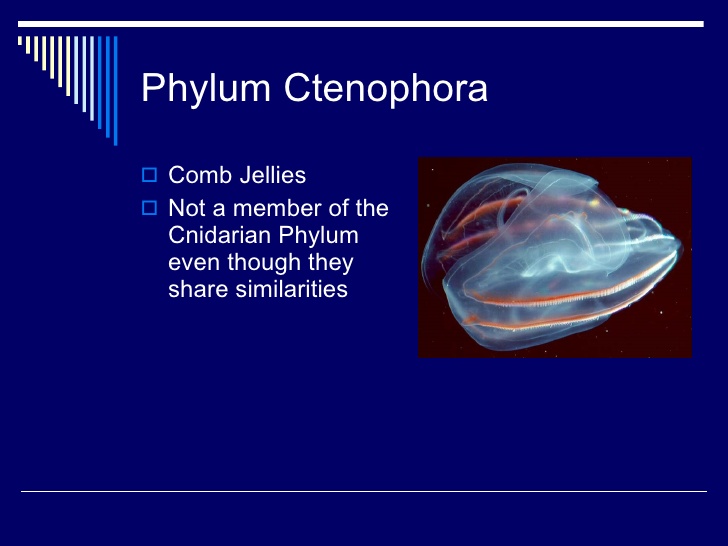
Phylum Ctenophora
Ctenophora comprise a phylum of invertebrate animals that live in marine waters worldwide. They are notable for the groups of cilia they use for swimming, and they are the largest animals to swim with the help of cilia. Depending on the species, adult ctenophores range from a few millimeters to 1.5 m in size. Only 100 to 150 species have been validated, and possibly another 25 have not been fully described.
Reference:
- Miller, A.S. and Harley, J.B., 1999 & 2002 . Zoology , 4th and 5th Edition (International), Singapore:McGraw Hill.
Course Material
- Invertebrates introduction; classification of organism; evolutionary relationship and tree diagram; pattern of organization
- Animal like protest: The protozoa, life within a single plasma membrane; evolutionary perspective, maintenance function, symbiotic relationship
- Protozoans taxonomy (phyla, sub phyla, super classes) locomotion, cilia and pellicle structures, reproduction; further phylogenetic consideration
- Multicellular and Tissue Levels of Organization
- Phylum Cnidarian (coelenterate) the body wall and nematocysts; alternation of generations; maintenance functions
- Phylum Ctenophora
- Triploblastic and Acoelomate Body Plan: Phylum Platyhelminthes
- Phylum Nemertea; Phylum Gastrotricha
- Pseudocoelomate Body Plan
- Phylum Rotifera and Phylum Nematoda; Phylum Kinorhyncha
- Mollusca Success
- Gastropods
- Annelida
- Regeneration, reproduction and development in different classes of annelids
- Arthropods
- Metamerism and tagmatization; the exoskeleton
- Chapters 16
- Department Chemistry
- Teacher
Irum Waheed


